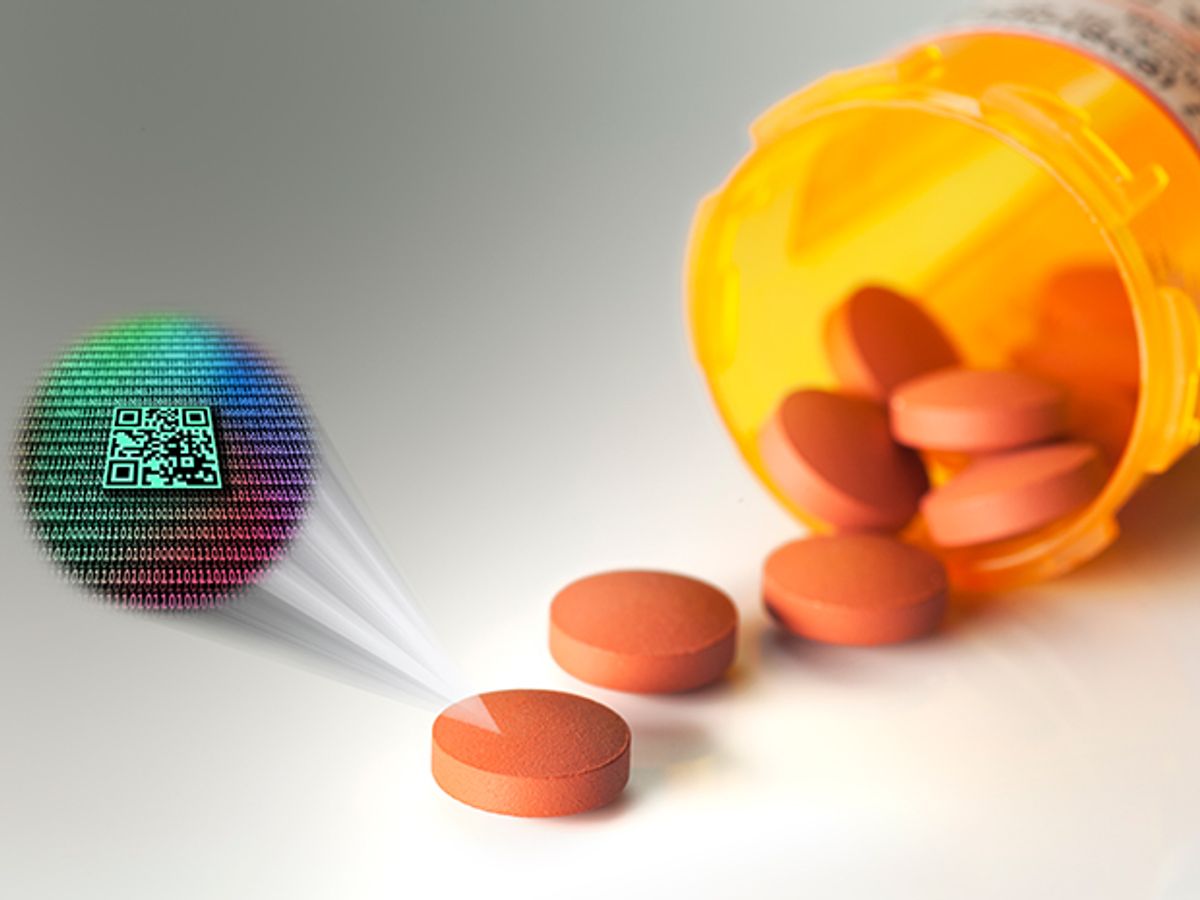In July, the U.S. Drug Enforcement Agency raised the alarm about the spread of fake pills containing a deadly, potent opioid called fentanyl. “Hundreds of thousands” of these counterfeit drugs are changing hands around the country, the agency reported, and an estimated 700 people died from ingesting them between late 2013 and 2014 alone.
Drug counterfeiting is not only deadly—it’s big business. The size of the black market is inherently hard to quantify, yet some estimates put it in excess of $250 billion per year.
Fake drugs are a significant healthcare problem in developing countries, which often lack dedicated enforcement agencies, but the United States is not immune: In January, for instance, the DEA in New Jersey arrested a counterfeiter after an undercover agent purchased of 6,000 fake pills made in the United States. The pills looked just like small, round 30-milligram oxycodone tablets, but they contained fentanyl instead. (Both are pain killers used illicitly, but fentanyl is responsible for numerous overdose deaths.)
Counterfeit pills closely mimic the shape and size of authentic medications, and their true identity can often only be detected when a pill is taken to a laboratory, ground up, and analyzed—a process that can take days to weeks. A small, Hawaii-based technology company, TruTag Technologies, is making waves with a new way to authenticate pharmaceutical products—a dust-sized, edible tag that can be secretly added to the coating of a pill and later scanned to verify the pill’s origin and identity.

Earlier this month, TruTag demonstrated a handheld microtag reader at the International AntiCounterfeiting Coalition’s 2016 Annual Fall Conference, and the company is currently launching its product into the dietary supplement market. By 2017, they plan to be in prescription drug products, says TruTag president Kent Mansfield.
Past attempts to authenticate medications have focused on packaging, such as stamping packages with a unique serial number that can be verified via text or a phone call. Yet counterfeiters are keeping pace with sophisticated packaging processes, including mimicking holograms and color-shift inks.
In 2011, the U.S. Food and Drug Administration opened the door to adding tags, or “physical-chemical identifiers,” directly onto pills without requiring a new drug application, so long as the manufacturer submits information about the safety and quality of the identifier. TruTag’s technology fits the bill: The 50-micrometer particles are made of silicon dioxide, or silica, an ingredient used for decades in food and medicines and “generally recognized as safe” by the U.S. Food and Drug Administration.
The company produces about 12 to 15 million particles per gram of silica, producing a fine, light powder that could fill a thimble. Each little mote of silica is processed to embed a secret code. This is done by etching away bits of the material, excavating until the tiny tag is 80 percent lighter than it began while still occupying the same volume. The etching process carves in a specific pattern, making the particle porous, like a one-of-a-kind, itsy-bitsy block of swiss cheese.
The coded “TruTags” are then ready for use. They can be added to a pharmaceutical company’s manufacturing process without any infrastructure changes or additional equiptment, says Mansfield. “A company can fold us into their manufacturing process tomorrow.” TruTag has already conducted “thousands” of tests with markers at dozens of pharmaceutical companies, he adds, from the “biggest names in the industry” to small biotech firms. He declined to share additional client details at this time.

Once TruTags are successfully hidden in the pill coating, which could contain hundreds of the microtags per dose, one of the TruTag readers—either a newer handheld scanner or a box-like optical device—shines light onto it, then reads the returning spectrum like a barcode. Special algorithms in the reader decode the spectral information, and pull up the corresponding drug information from the company’s database, including where and when it was manufactured and by whom. That database contains millions of possible codes ready for etching, so Mansfield doesn’t expect to run out anytime soon.
For now, the technology will most likely be used by pharmaceutical companies and brand owners policing their own supplies, but Mansfield hopes someday patients will be able to use their own smartphones to scan a pill. The tool could be especially useful for individuals who take many medications or order their pills online, as studies suggest 90 percent of drugs bought through the internet come from a different country than claimed by the website. Such a process could protect consumers from dangerous products—like fentanyl-laced drugs.
“Cell phones are catching up with the type of technology we use,” says Mansfield. “We ultimately want to have the consumer involved.”
Megan is an award-winning freelance journalist based in Boston, Massachusetts, specializing in the life sciences and biotechnology. She was previously a health columnist for the Boston Globe and has contributed to Newsweek, Scientific American, and Nature, among others. She is the co-author of a college biology textbook, “Biology Now,” published by W.W. Norton. Megan received an M.S. from the Graduate Program in Science Writing at the Massachusetts Institute of Technology, a B.A. at Boston College, and worked as an educator at the Museum of Science, Boston.



